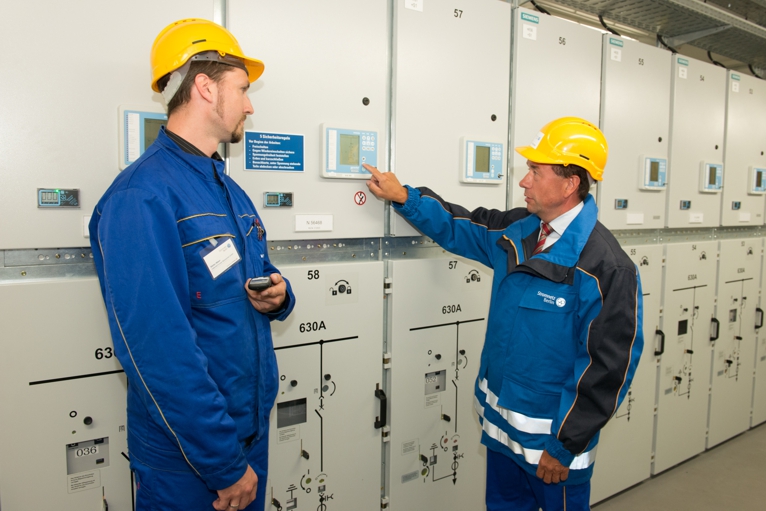New Köpenick substation is on the grid
25.06.2014
The first of around 32,000 household and business customers in the Wendenschloss, Köpenick and Grünau districts will now receive their energy from the new substation in Köpenick's Landjägerstrasse.
The first of around 32,000 household and business customers in the Wendenschloss, Köpenick and Grünau districts will now receive their energy from the new substation in Köpenick's Landjägerstrasse. Accompanied by representatives of the Treptow-Köpenick district, members of parliament, interested residents and employees of the companies involved in its construction, Stromnetz Berlin GmbH celebrated the launch of the grid facility, which cost around EUR 30 million to build. "Security of supply and a customer-centric attitude are our bread and butter! The new substation represents an investment in both," said Dr Helmar Rendez, Chairman of the Board of Directors at Stromnetz Berlin GmbH, at the event.
Modern technology reduces grid customers' risk of being affected by an outage. Thanks to remote management of the substation from the central grid control centre, the energy supply can be redirected to a different route extremely quickly in an emergency and electricity restored. The ring-shaped structure of Berlin's electricity distribution grid makes this possible: This means that the new Köpenicker plant is also fed on both sides by the Wuhlheide node which connects Stromnetz Berlin GmbH's distribution grid with the upstream transmission grid.

The new substation joins the grid with a single click: Dr Helmar Rendez, CEO of Stromnetz Berlin GmbH (right-hand side) and Stefan Näser, Vattenfall Europe Netzservice GmbH, officially launch the Landjägerstrasse plant.
The substation on Landjägerstrasse replaces two existing plants which are around 50 years old. This means replacing the uneconomical 30 kV and 6 kV voltage levels in south-east Berlin. By reducing the number of plants and concentrating down to just three voltage levels (110 kV, 10 kV and 1 kV), Berlin's distribution system operator can run the grid more efficiently. The process of replacing the previous substations will take around one more year. This is how long it takes to switch individual groups of customers over to the new station in stages.
Planning for the new facility began as far back as 2009. The ground-breaking ceremony took place in 2011. The companies Siemens and Elpro contributed significantly to the construction. City planning requirements were given particular emphasis in the construction of the new building. As such, the substation building's brick facade fits as well as possible into the existing development in Köpenick's centre.
